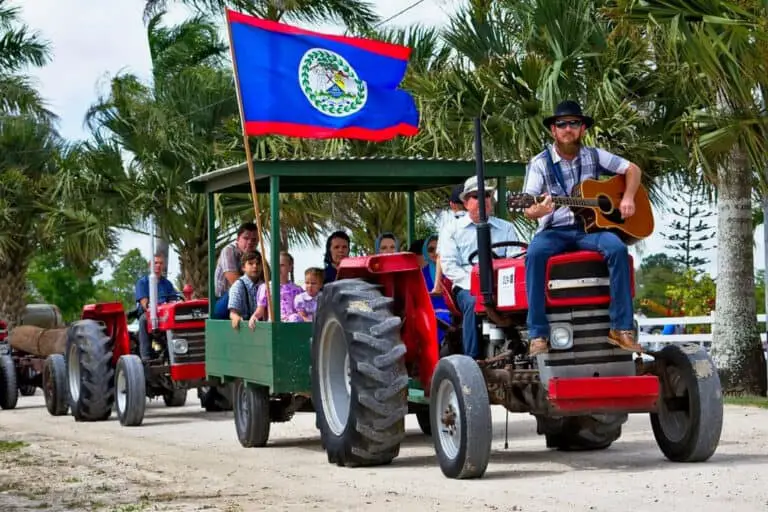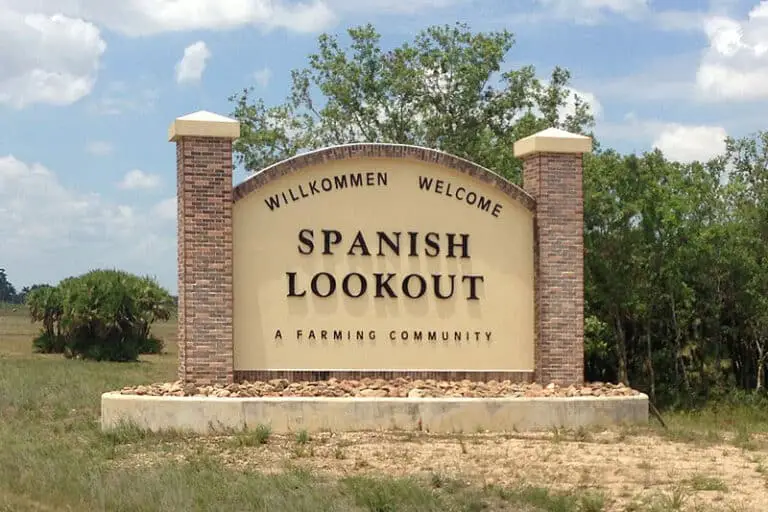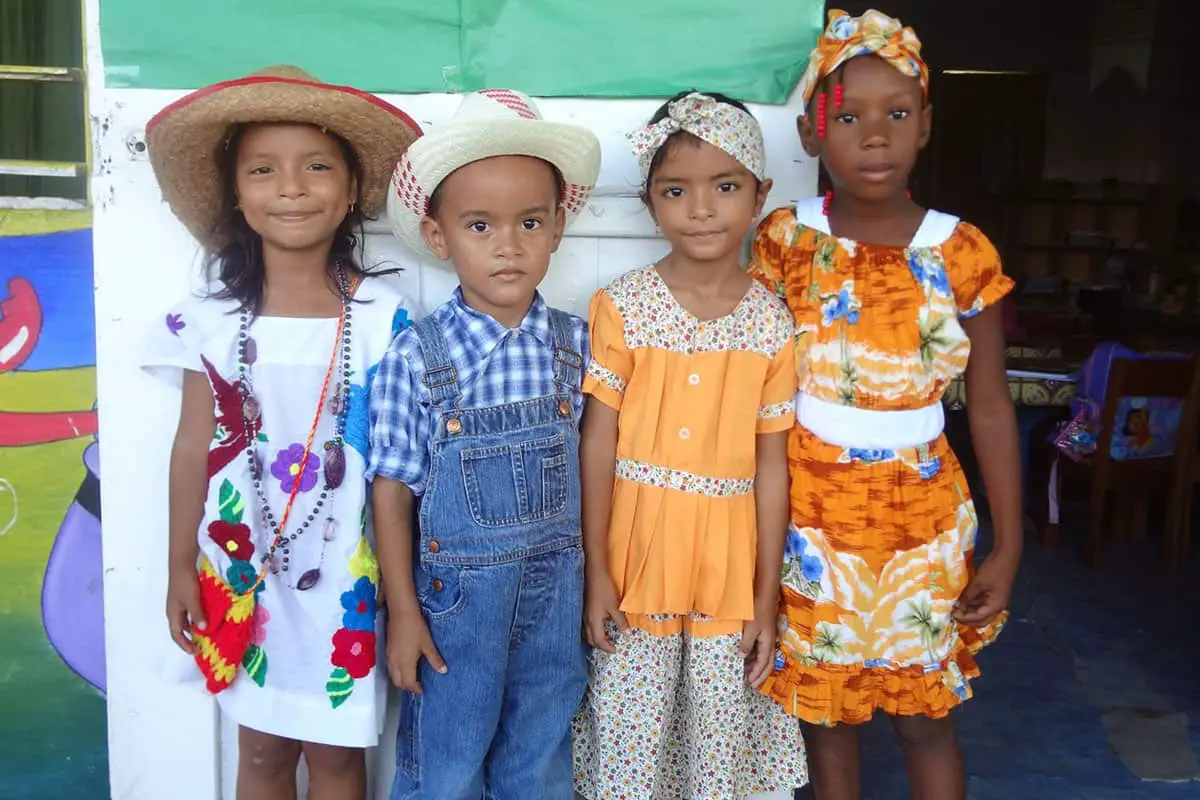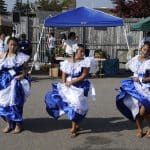When most people think of Belize, they picture white sand beaches, aquamarine oceans, tropical paradise, and Mayan ruins. However, there is a whole other side to Belize, one of closed communities and a more conservative lifestyle. Belize is a melting pot of cultures, and one of these fascinating cultures is the Mennonite people.
Over 12,000 Mennonites live in Belize. They originated from West Prussia. They live in various parts of Belize, including the Cayo, Corozal, Orange Walk, and Toledo districts. They have a unique culture separate from other Belizean cultures.
In the rest of this article, I’ll describe the Mennonites in Belize in detail, including who they are, their history, where they live, and their culture. If you’re curious about this group in Belize, keep reading!
Who Are the Mennonites in Belize?
Belize is home to a Mennonite population of over 12,000 people. They are a group of Christians who live simple lifestyles without modern technology and are only partially integrated into outside society.
The Mennonites are a sect of Christianity that has its roots in Anabaptism in Friesland. Their beliefs are based on the writings of Menno Simons. The people have a strong commitment to pacifism, so whenever they faced persecution, they relocated instead of fighting. Eventually, this relocation led them to Belize.
Today, the Mennonites are large contributors to Belize’s poultry and dairy markets, even though they make up less than 4% of the population. They also grow produce, make honey, and make high-quality handmade furniture.
History of Mennonites in Belize

The Mennonites in Belize descend from a population of Mennonites in Russian-controlled West Prussia in the later part of the 18th century. This group first emigrated to Canada, then to Mexico, and finally to Belize.
An old order of the Mennonite religion lived in West Prussia in the late 18th century and the beginning of the 19th century. A group of these Russian Mennonites moved to Canada in 1873, and after a disagreement in theology, a smaller group moved to Mexico in 1922.
Then, a splinter group of these Mexican Mennonites moved to Belize, which was called British Honduras at that time, in search of isolated farmland. The Belizean government offered them land, exemption from some taxes, and religious freedom.
These settlers began with land that was dense rainforest, but through their hard work and frugality, they were able to clear the land and start growing crops and raising cattle.
Since then, the Belizean Mennonites have been joined by other Mennonites from North America. Because of this history, to this day, Belizean Mennonites are still called “Russian Mennonites.”
Where Do the Mennonites Live?
Belizean Mennonites live in the various parts of Belize, including the Cayo, Corozal, Orange Walk, and Toledo Districts. Mennonites tend to stick to their communities.
In the Cayo District, Mennonites live in Lower Barton Creek, Spanish Lookout, Springfield, and Upper Barton Creek. In the Corozal District, the Mennonites usually live in Little Belize. In Orange Walk, they live in Blue Creek, Indian Creek, and Shipyard. Finally, in the Toledo District, the Mennonites live in Pine Hill.
These groups vary in their orientation. The groups in Barton Creek, Springfield, and Pine Hill are extremely conservative and therefore don’t have any electricity and travel by horse and buggy. Contrastingly, the Mennonites in Blue Creek are more modern, so they use cars and often take advantage of modern conveniences.
Mennonite Culture
Mennonite culture is unique, starting with their predominantly Anglo appearance. Men wear straw hats, checkered shirts, and overalls, while women wear long dresses, bonnets, and aprons. Most of their clothing is handmade.
Most Mennonites speak Plautdietsch, a German dialect, but use standard German for teaching and church services. They also speak English, but this is mostly used for business purposes outside the Mennonite community. In more conservative communities, they speak Pennsylvania German.
Traditionally, Mennonites work as farmers, and the same is true of Belizean Mennonites.
They produce the following crops:
- Corn
- Beans
- Tomatoes
- Potatoes
- Carrots
- Papaya
- Cabbage
- Watermelons
Mennonites who aren’t farmers are often skilled carpenters, especially those who live in the Blue Creek community. In this community, they manufacture beautiful wood furniture and wooden houses. Many Mennonite men have successful businesses selling their furniture in Belize City and other urban areas. In some areas, Mennonites even construct roads and bridges.
Another important community to note is that living in Spanish Lookout, Cayo District. These Mennonites are more modern in their dress in behavior. Currently leaving their modesty beliefs for more worldly attire as time goes by.

The Spanish Lookout community also contributes greatly to the Belizean community as they produce a great amount of Belize’s milk, rice, cheese, beef, pork, and chicken products. Additionally, they are the largest importers of auto and truck parts, and other items that are difficult to find locally in Belize.
Faith is of great importance in Mennonite culture. The denomination is named after Menno Simons, a Catholic priest who eventually left Catholicism to become an Anabaptist. His influence grew in the Netherlands and Germany, and despite being considered a heretic, he became the leader of the Anabaptist movement.
Mennonites are strong believers in pacifism, peace, and justice, and they dedicate themselves to living holy, Christ-centered lives. For this reason, many Mennonites participate in missionary work.
Mennonites believe that all scripture from the Bible is absolute truth and the path to righteousness. Therefore, they strictly adhere to everything the Bible instructs, which can be seen in their everyday choices. For example, Mennonite women often cover their hair with caps or bonnets because the Bible instructs them to do so.
The following table outlines some of the main beliefs of the Mennonites:
| Category | Mennonite Beliefs |
| Heaven and Hell | Those who have received Christ and accept them as their Lord and Savior go to Heaven. Mennonites don’t have a specific position on Hell but believe that sinners are eternally separated from God. |
| Jesus Christ | Christ is the Son of God and saved humanity through his sacrifice. |
| Sabbath | Mennonites worship on Sundays, and any work is forbidden on this day. |
| Salvation | Believers need to accept God’s grace, repent, join a church, and live a life obeying God to be saved. |
| The Trinity | The Trinity includes the Father, Son, and the Holy Spirit. |
| Pacifism | Jesus taught his followers to love everyone, so violence is never a Christian response. Mennonites do not serve in the military. |
How Do Mennonite Culture and History Differ from East Indian, Syrian, and Lebanese Culture in Belize?
The history and culture of Belize’s East Indian, Syrian, and Lebanese people differ from Mennonite culture in several ways. While Mennonite culture is rooted in European traditions and farming practices, the East Indian, Syrian, and Lebanese communities have a diverse heritage that includes elements of Indian, Middle Eastern, and Caribbean influences.
Final Thoughts
Belize is home to 12,000 members of the Mennonite community. They are largely isolated and conservative, although some groups are more modern. Mennonites are large contributors to Belize’s domestic poultry and dairy markets and are known for their handmade furniture.





